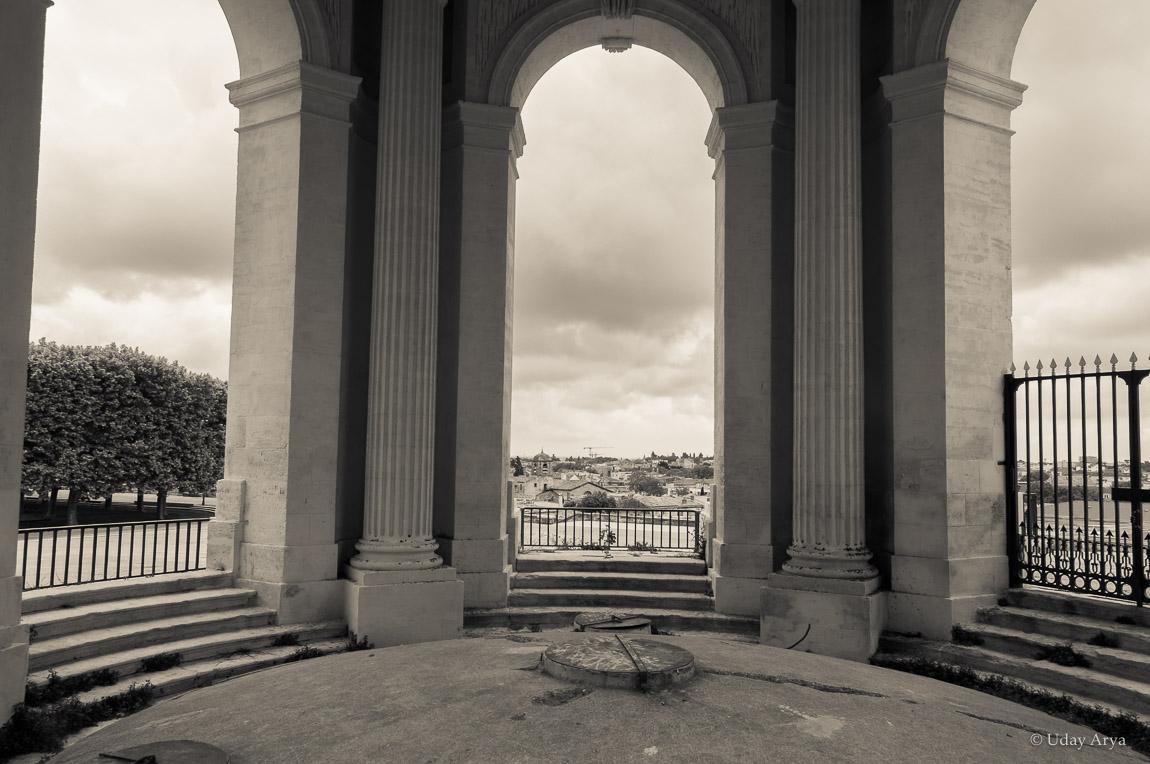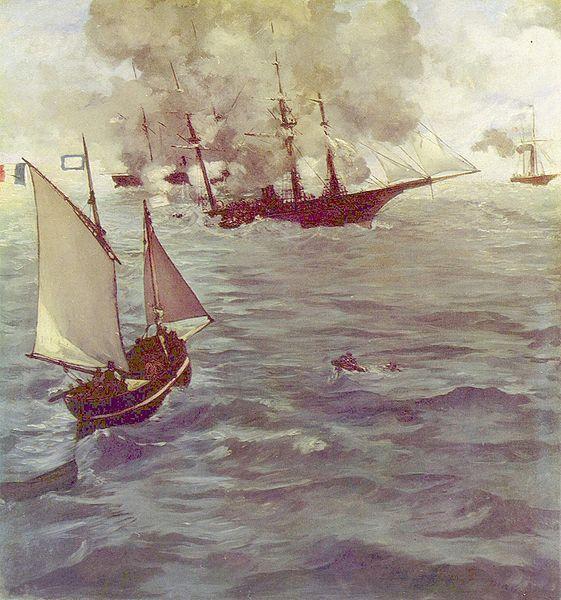As you go further down south in France, the cities seem to become less French. Southern France touches Spain and Italy, and their influence on the local music, customs, architecture, and colors create truly hybrid ‘European’ cities. These are really, in a sense the ‘United States of Europe’, without the binding federal unity of America. We visited a couple of such cities in May – Montpellier & Avignon.
Perhaps the best part of our visit was that we got to stay with a really nice couple of friends who were studying at Montpellier (the city has an excellent university). They were put up in a story-book dwelling in a 5th floor walk-up in the heart of the city. All around were narrow, cobbled pedestrian-only streets that were arranged specifically to test our navigational skills..
The outward history of Montpellier is fairly uninteresting – the city was bought, sold, received in dowry (yes, really), then resold again.. sounding a lot like the dates and names of our inspiringly(!) written history textbooks.
On that note, it so happens that one of the best books I have on France is a 1943 work by an Englishman. I’d picked it up last September (’11) from a perfect-smelling old bookstore in Cardiff. Misleadingly titled “French life and its problems” (an oxymoron, as there can really be no problems living in France), it is actually a very rounded, insightful series of essays on many aspects of France and her people. This little excerpt below touched upon the South, Montpellier in particular and is worth sharing:
..Southern France is thus in a rather special sense Roman France. Its languages, Provençal and the Langue d’oc, are nearer to Latin than is standard French; its cities, with Roman amphitheatres still in use, speak to this day of their Roman pride; its people, as soon as possible after the Dark Ages, accepted Le Droit écrit, that is, the tradition of Roman Law. In the Middle Ages there developed in southern France, as in Italy, the student-democracies which formed the southern type of university, in contrast with the universities like Paris, Oxford, Cambridge, Prague, Cracow, and those of central Europe generally, in which teachers gathered students around them. The universities, at least of Montpellier and Toulouse, retained something of their own tradition down to our own time, in spite of Napoleonic and other centralisation and the consequent dominance of Paris.
[Pg. 28. French life and its problems. by H.J. Fleure Hachette (1943) ]
Wiki describes Montpellier as one of the few cities in France without a Roman heritage. This is actually incorrect – there is even a Roman arch and a Roman church. It is best characterised as a university town, and represents to a fair extent the novel experiment that modern Europe is attempting – becoming the United States of Europe.
We spent a day in a nearby city called Avignon, also very beautiful and known best for its annual summer theater, arts and music festival with over 100,000 visitors flooding the town from all over. When it is not festival season, Avignon is most known as the ‘City of Popes’, as it was actually the seat of Christianity for a brief period in its history. Avignon is also loved for its beautiful bridge, simply called the ‘bridge of Avignon’ or ‘Pont d’Avignon’ in French, and it does looks most beautiful at night.
A few memories from the trip.

View of an old window, Montpellier

Art Installations everywhere – a cycle emerges through walls!

At a street corner in Montpellier, looking up at an old building through the branches of a tree – a cool, cloudy morning in early spring

The beautiful Esplanade of Arches (L’Esplanade des Arceaux), Montpellier

Near where we had our lunch.

A narrow street in the Ancient city of Montpellier – leading to the Cathedral

Public spaces and outdoor cafes under trees in historic oldtown of montpellier

Aerial view of a street in Montpellier

Old lane around the University area in Montpellier, overcast skies

Standing at a street corner – this way or that?
Avignon

Terrace of the papal palace. Avignon

Inside the Palais des Papes or the Papal palace of Avignon

Stained glass window at the papal palace in Avignon – bringing light, symbolically?

The Palais des Papes or the Papal palace of Avignon, sits here on a rocky foundation at an impressive height over the rest of the city.

A musician, a cello player lugging his instrument on the cobbled streets near the Papal palance, in Avignon







Very captivating graphics! the cycles decor – very interesting! wonder what inspired (!)
the cobbled streets, quaint houses, grey parks….typically europe! the writing gives a sense of personal touch. beautiful blend of the modern and the ancient!
thanks uday
Excellent photos, Uday. And a write-up that perfectly complements their beauty !
Loved your account of your trip. Beautiful photographs as always. My favourites are the first bike with its shadow, the musicians and ‘A narrow street in the Ancient city of Montpellier’. Did you happen to see le famous pont d’avignon? :)
Thanks Vaish. Those are among my favorites too. Yes, we did see pont d’avignon, although during evening light. We were told it looks even more beautiful at night.
So wonder-full :)